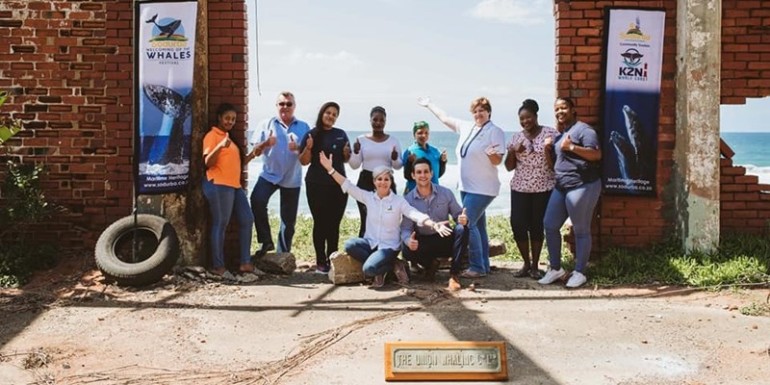Sponsored Listings:
The Bluff, in Durban, has been awarded international Whale Heritage Site status, making it one of two Whale Heritage Sites in the world.
The accreditation brings regional, national, and global attention to the area and helps to promote sustainable tourism, marine conservation, and the whale-related cultural heritage of coastal communities, according to the World Cetacean Alliance.
Josh Thomson, owner of Whale and Dolphin Tours in Durban, says news of the accreditation is fantastic.
“Because it is a very rare occurrence for somebody to be issued a Whale Heritage Site, it opens up a world of possibilities with the international community for Durban as a whale-viewing destination.” He says many people are not aware that there are whales in Durban.
“I would envisage a huge growth in people visiting Durban and using tour agencies and whale-watching companies such as ourselves more in the future.”
The Soul of South Durban (SODURBA) Community Tourism Association, supported by WILDOCEANS, WESSA and the Bluff Ward Councillor, worked with the Bluff Steering Committee to meet the criteria required by the WCA to apply for certification.
“There are huge plans for the future, this was just our first step to achieving them,” comments Melissa Lee of SODURBA.
The Bluff Headlands is also home to a historic whaling station and many opportunities for whale and dolphin watching along the extensive coast. “This presents an opportunity for tourists to take a cultural and environmental journey from the cruel, irresponsible activities of commercial whaling to the respect these magnificent animals now deserve from conservation authorities around the world.”
SODURBA launched its trademark Whale Watching Route to fulfil the stringent requirements in becoming an International Whale Heritage Site. One of the primary objectives of the route is to develop and uphold responsible tourism through the establishment of educational projects informing and educating local children and the surrounding community to protect the planet and cetaceans.
A localised tourism strategy was also put in place to promote conservation and responsible tourism, and tourism projects were developed to promote business and provide employment opportunities.
Other projects include educational initiatives and art projects, the creation of destiny island to promote conservation as well as becoming an attraction along the Whale Heritage Route.
Four whale-watching viewpoints have also been identified along the Bluff coastline. They will provide tourism and the local community with an opportunity to view whales moving along the east coast.
The third annual ‘Welcoming of the Whales’ event took place on June 29 and was attended by more than 6 000 people.
Various whale station tours have been arranged by SODURBA during special events. While the station is currently not freely accessible, negotiations are under way between all stakeholders to access the station on a regular basis.
According to Thomson, the best time for whale watching is between June and mid- November. Viewers can make use of the services of reputable, licensed and accredited charters that go out to sea for more personal encounters, or head to the Bluff, which, due to the altitude, is the best viewing site from land.
“The views off the Bluff are quite amazing and you do see quite a few whales breaching.”
The Bluff and Hervey Bay, in Australia, were the only two successful applications out of nine for accreditation as a Whale Heritage Site.
These sites are identified against criteria that interweave natural and cultural elements and acknowledge critical places that, for reasons of physical and social geography, are sites where people can coexist with cetaceans in an authentic and respectful way.
Source: tourismupdate.co.za










